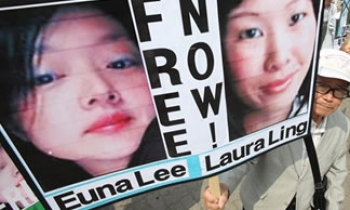As marketers seek to tie magazine articles more closely to the advertisements that support them, the American Society of Magazine Editors is holding fast against such pressure. And the move could cause consternation among advertisers.
The magazine-industry group, which monitors the separation of advertising and editorial in magazines, is expected to issue revised guidelines today at an industry conference. The new rules resist a Madison Avenue push to embed marketing messages and promotions in magazine articles even as advertisers get similar treatment in TV programs, videogames and movies.
Unlike most TV programs and movies, magazines have built up relationships with consumers over decades, says Mark Whitaker, president of ASME and editor of Washington Post's Newsweek magazine. Caving in to some of Madison Avenue's latest demands would hurt that relationship, which advertisers prize, he says. "Trends in advertising are going to come and go," Mr. Whitaker says. "The one thing that's going to keep you in business is your relationship with your readers, and if you jeopardize that, then you jeopardize the franchise."
While making a few changes, ASME is largely keeping the spirit of its previous guidelines intact. The group is winnowing down five pages of rules into what Mr. Whitaker calls "ten commandments." These compact guidelines are aimed at making sure readers can understand clearly what parts of a magazine are editorial and what parts are advertising and that editors have final say over what is appropriate for a magazine. One change that could please marketers allows advertorials, or special advertising sections, to be labeled with the word "promotion," rather than "advertisement."
Advertisers may have hoped for more. "Some advertisers could be disappointed," says Robin Steinberg, director of print services for Publicis Groupe's MediaVest. "We need to be able to push the envelope" to devise ads that "create impact, relevance and buzz," she adds. "The guidelines have been holding magazines back," says Jim Poh, vice president and director of creative content distribution at Miami ad agency Crispin Porter + Bogusky.
Publishers of individual magazines say advertisers clamor to place ads about products and services next to articles that might relate to them -- which in certain cases could violate the group's guidelines. Conceivably, advertisers could start requesting that certain brands appear in articles, says Steve Moynihan, director of media, marketing and business development at Omnicom Group's GSD&M agency. "That's what a lot of marketers are looking for," he says. "How can I become part of the story?"
Some magazine publishers say they find the rules burdensome. One publisher suggests the rules would apply better to magazines centered on traditional journalism and news analysis, rather than those focused on entertainment. "My feeling is, what's the point of having guidelines if they can't apply to all magazines?" asks Mr. Whitaker.
One recent maneuver that caught the eye of ASME appeared in the Aug. 22 issue of the New Yorker. Target purchased all of the ad pages in the issue, and commissioned various pieces of original artwork featuring Target's "bull's-eye" logo, colored in red and white, to run in the magazine as advertising.
ASME found the New Yorker was in technical violation of its guidelines, say people familiar with the matter. ASME requires that an issue sponsored by a single advertiser include a note from the publisher or editor saying as much, says Mr. Whitaker. The ad effort was "so unusual that even at the end of the day you weren't inclined to be deeply offended by it, you might have been puzzled," he says. "A publisher's note could have addressed that." A New Yorker spokeswoman says the magazine respects ASME's rules and decisions and abides by them.
What sells magazines, says Mr. Whitaker, is the sense that they have independence, so picks of products and other services are "worth more than a lot of advertising." Giving in to the most egregious ad demands would erode readers' respect, driving them away, which in turn could send advertisers following them.
Write to Brian Steinberg at brian.steinberg@wsj.com









